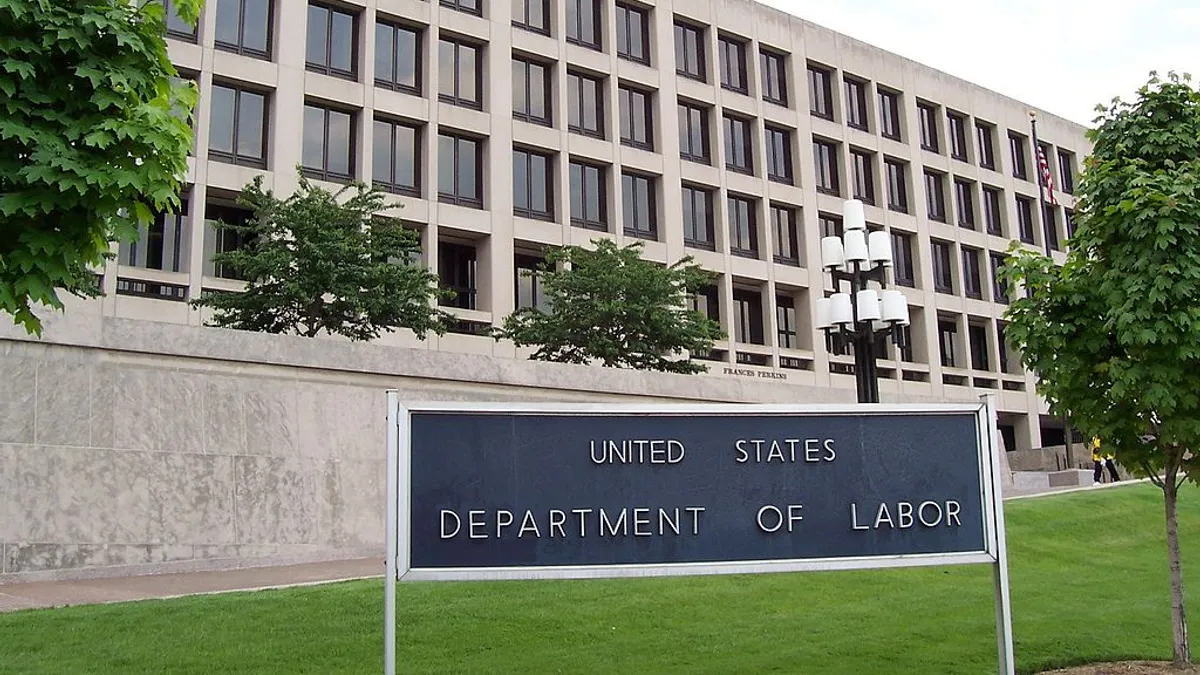Dive Brief:
- Several business groups and universities sued the Trump administration this month, challenging updated regulations that restrict immigration through the H-1B visa, which-allows highly skilled international workers to work for U.S. employers.
- Among those behind one of the lawsuits are the U.S. Chamber of Commerce, the National Association of Manufacturers and the National Retail Federation. It also includes a number of universities, including Stanford University, Cornell University, the University of Rochester, University of Southern California and University of Utah. Plaintiffs in the other lawsuit include medical and dental organizations and another group of universities, including Purdue University, Indiana University and University of Michigan.
- "Despite their massive impact, defendants promulgated these rules without the notice-and-comment rulemaking required by the Administrative Procedure Act (APA)," the Chamber of Commerce complaint said. "Because defendants have no 'good cause' to dispense with the APA's most fundamental protection for the regulated public, the Court should swiftly set these rules aside."
Dive Insight:
Throughout the Trump presidency, employers have expressed frustration with the administration's stance on immigration, particularly the H-1B visa, which is widely used in the business world, particularly in the tech community.
"Any Fortune 500 company absolutely has immigrant workers, and has H-1B workers, so I think not too many industries are untouched by this," said Roger Tsai, a partner at Holland & Hart.
The regulations being challenged by these lawsuits came from two different federal agencies: the Department of Labor and the Department of Homeland Security.
DOL's regulations increased the wage scale for H-1B holders significantly, by 30%-60%, according to an analysis by Tsai.
Additionally, DHS released an interim final rule that narrowed the degree requirements for H-1B holders to work in certain jobs, such that a math major would not qualify for a data science position, or an electrical engineering major might not qualify for a programming job. It also attempts to limit the terms of contractors hired through the H-1B program from three years to one.
Normally, the procedure to pass new regulations like these includes periods for public comment before an interim final rule is released, according to Tsai and Liz Espín Stern, a partner at Mayer Brown and head of its global mobility and migration practice.
"Suddenly, you've got the Department of Labor saying H-1B workers must be paid [more], because our own system, which we've been using, is obviously wrong," Stern said. "It just has a gaping hole as to the rationale behind any change in the rule, and it definitely doesn't address the timing," she said.
Tsai and Stern said they do not expect these regulations to hold up, particularly given the expedited timing with which the administration approached them.
"I think most immigration attorneys expect that there will be a reversal of such policies, either through the election, or through federal court injunction, I would anticipate, over the next two to four months," said Tsai.
Still, employers in many industries are affected, including those who may be filing for renewal of their H-1B this year.
"If someone moved from one location to another, there's a requirement for an amended filing almost inevitably," said Stern. "In that moment, that amended filing for somebody who simply just moved because they were working virtually [...] can trigger the need for filing and suddenly their salary must be a completely different level."
The administration's latest regulations, along with its previous efforts to curb immigration, has driven employers to look to other countries, as well as delay filings and keep job openings vacant for longer periods of time as they're forced to navigate uncertainty in workforce planning, according to Tsai and Stern.
"I think there is absolutely no question that all of these industries are already, first of all, taking on the fight to prevent this from becoming a reality and yet, at the same time, anticipating that there's some vulnerability," Stern said, with respect to future workforce needs.












